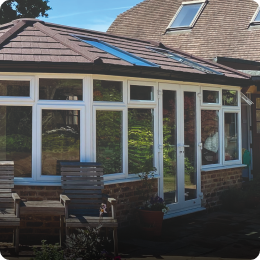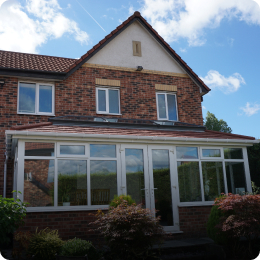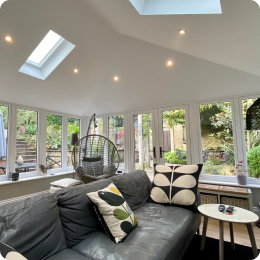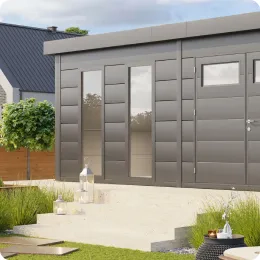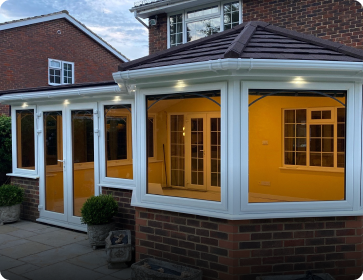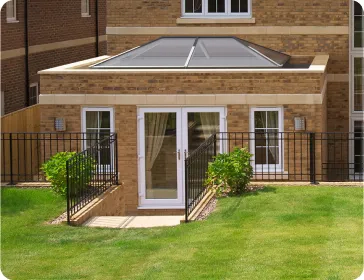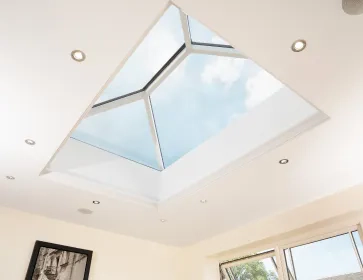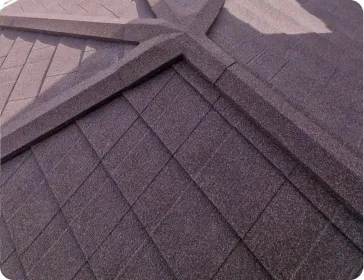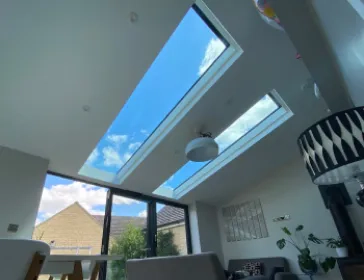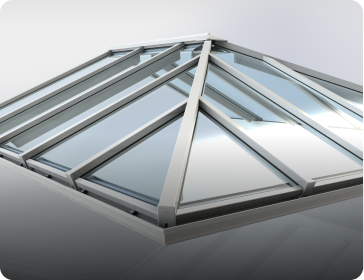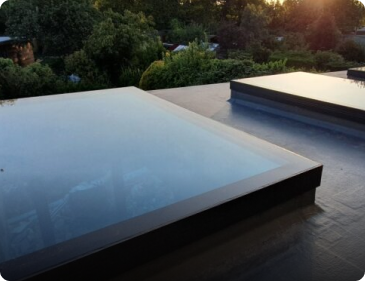
Upgrading to a solid conservatory roof is a brilliant way to transform your space into a functional, comfortable room that you can enjoy all year round. From improved insulation to soundproofing and a sleek look, a solid roof can add immense value to your home. However, there’s more to this upgrade than meets the eye, and it’s crucial to understand the legal requirements involved.
Before you start planning the installation, you need to ensure your project complies with UK building regulations. Failing to meet these requirements can lead to costly problems down the line. But don’t worry! In this guide, we’ll explain everything you need to know about building regulations for solid conservatory roofs, helping you make the right decisions.
What is a Solid Conservatory Roof?
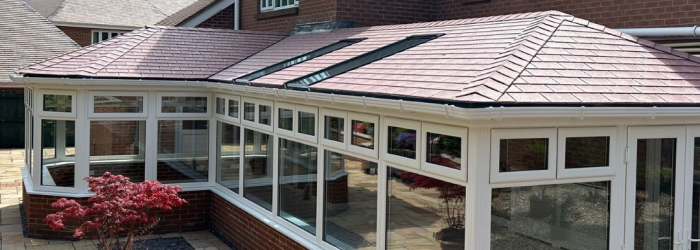
A solid conservatory roof replaces traditional glass or polycarbonate roofing with durable materials like tiles or slates. These roofs are designed to blend seamlessly with your home, offering superior insulation, soundproofing, and overall comfort.
Benefits of a Solid Conservatory Roof:
- Improved insulation: Keeps your conservatory warm in winter and cool in summer, making it usable all year round.
- Energy savings: A solid roof reduces heat loss, leading to lower energy bills.
- Soundproofing: It blocks out noise from traffic, neighbours, or heavy rain, creating a more peaceful environment.
- Aesthetic appeal: A solid roof gives your conservatory a cohesive look that blends with your home’s style.
- Increased property value: A properly insulated conservatory with a solid roof has the potential to boost the overall value of your property.
A solid roof is a popular choice for homeowners who find their conservatory too cold in winter and too hot in summer.
Do You Need Building Regulations to Replace a Conservatory Roof?

The short answer is yes. When replacing your conservatory roof with a solid roof, you must comply with building regulations. This is a common point of confusion for many homeowners, so we’ll run through exactly what’s included in building regulations below.
Understanding UK Building Regulations for Conservatories
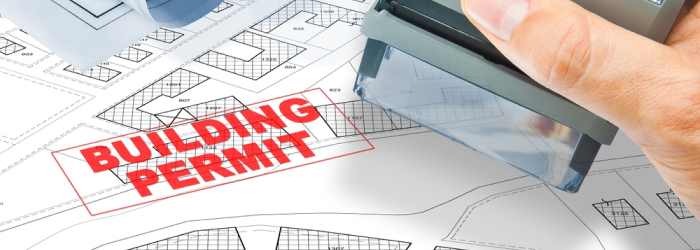
Building regulations in the UK are in place to protect the structural safety of your home and ensure energy efficiency. Here’s what you need to know:
Key Points of Building Regulations:
- Planning permission vs building regulations: You usually won’t need planning permission to replace your conservatory roof. Unless you’re making significant changes to the structure, height, or overall footprint of the conservatory.
- Structural safety: The new roof must not overload the existing conservatory structure. This includes ensuring that the conservatory’s walls and foundations can support the added weight of the solid roof.
- Thermal performance: The roof must meet insulation standards (U-values) to improve energy efficiency and reduce heating costs.
- Fire safety: The materials used must meet fire safety regulations, particularly if your conservatory is close to other buildings.
- Ventilation and natural light: Even with a solid roof, adequate ventilation and natural light must be maintained to ensure a comfortable living space.
The Difference Between Planning Permission and Building Regulations
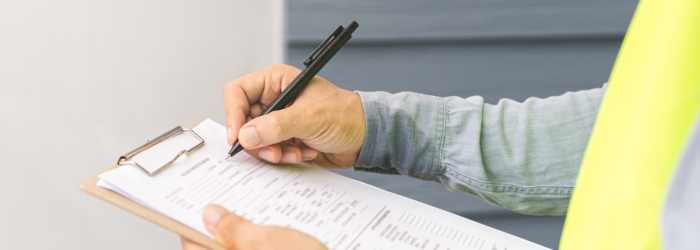
This is a common question among homeowners, and to clarify: building regulations and planning permission are not the same thing.
- Planning permission: This focuses on the development or expansion of a building and considers its impact on the environment, neighbours, and the site’s conditions. You usually won’t need planning permission unless you’re significantly altering the external appearance or height of your conservatory.
- Building regulations: These ensure that any new construction or renovation meets safety, structural integrity, and energy efficiency standards. When it comes to installing a solid conservatory roof, building regulations are mandatory.
If your conservatory already exists, you won’t need planning permission unless you’re making significant changes. However, building regulations apply to any structural changes, including roof replacements. It’s crucial to ensure your new conservatory roof complies with these regulations, which focus on health and safety standards.
Structural Requirements for Solid Conservatory Roofs
A key aspect of building regulations involves structural safety. Conservatories are often designed to support lightweight roofing materials like glass or polycarbonate. When replacing this with a solid roof, the added weight must be carefully considered.
Structural Considerations:
- Load-bearing capacity: Ensure the conservatory can handle the increased weight of the solid roof without causing stress to the walls or foundations.
- Roof pitch: The angle of the roof must be appropriate to avoid any strain on the existing structure.
- Structural calculations: A professional should conduct detailed calculations to confirm that your conservatory can safely support the new roof.
It’s essential to hire a certified professional who can assess the structural capabilities of your conservatory before the installation.
Thermal Performance and Energy Efficiency
One of the main reasons homeowners choose a solid roof is to improve energy efficiency. Building regulations require that conservatories with solid roofs meet specific thermal performance standards, including U-values, which measure the roof’s ability to retain heat.
Why U-Values Matter:
- Energy savings: A lower U-value means better insulation, keeping the heat in during winter and reducing cooling costs in summer.
- Comfort: Proper insulation ensures your conservatory remains usable throughout the year.
- Compliance: Meeting U-value targets ensures your roof complies with building regulations, which will help when selling your home.
SupaLite roofs are designed to meet and often exceed these energy efficiency standards, providing you with long-term savings and a comfortable living space.
Fire Safety Regulations
When installing a solid roof, fire safety is a critical concern. Building regulations require that certain materials are used to reduce fire risks, especially if your conservatory is attached to your home or near other structures.
Key Fire Safety Considerations:
- Fire-resistant materials: Ensure that the roofing materials you choose meet UK fire safety standards.
- Proximity to other buildings: If your conservatory is close to neighbouring properties, stricter fire safety regulations may apply.
It’s essential to choose fire-safe materials and work with certified installers who understand and comply with these regulations.
Ventilation and Natural Light
A solid roof may reduce the amount of natural light and ventilation in your conservatory, but there are ways to maintain a bright and airy space.
Solutions for Ventilation and Light:
- Roof windows or skylights: These can be incorporated into the roof design to allow natural light to flood in and ensure proper ventilation. Our SkyVista Glass Panel is the perfect choice.
- Airflow: Ensuring adequate airflow is essential to avoid condensation and maintain a healthy environment.
With the right design choices, you can enjoy the benefits of a solid roof without sacrificing light and ventilation.
Why Are Building Regulations Important?

While some homeowners might try to skip building regulations to save time or money, this can lead to serious risks. One common pitfall is opting for a wrap-over roof, otherwise known as a cladover roof, where a new roof is installed over your existing conservatory roof without removing the original. This is often done as a cheap and quick solution, but it comes with significant dangers!
The Dangers of Cladover Roofs
A cladover roof might look like a proper replacement from the outside, but it can cause severe structural issues. Here are some key dangers:
- Excessive weight: Your conservatory was built to support a certain weight, and adding a second roof on top of the original can exceed this capacity. This can stress the walls and foundations, potentially leading to cracks, structural damage, or even collapse.
- Non-compliance with building regulations: Cladovers do not meet the required structural standards set by building regulations. When replacing a conservatory roof, structural calculations are essential to ensure the new roof is safe for the existing structure.
- Future legal and financial consequences: Installing a roof that doesn’t meet building regulations can result in enforcement notices from local authorities, forcing you to make costly changes. Additionally, non-compliance can complicate the sale of your home, as it would show up in property searches, potentially lowering the value or causing sales to fall through.
Read more about the cladover roofs in our article: The Dangers of Conservatory Cladding.
How to Ensure Your Conservatory Roof Complies With Building Regulations
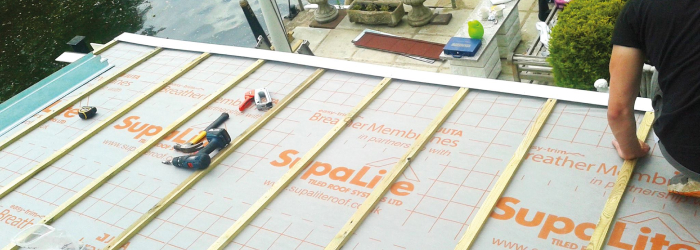
To avoid the risks of non-compliance, follow these steps to ensure your conservatory roof is installed correctly and meets UK building regulations:
- Hire certified professionals: Always work with a reputable, certified manufacturer like SupaLite. SupaLite’s independent, registered installers are trained to ensure all work complies with building regulations, and they work alongside registered building inspectors to certify the work.
- Remove the old roof: Unlike cladover roofs, a proper solid conservatory roof installation involves removing the old roof completely. This ensures that the new roof doesn’t overload the structure and meets all safety standards.
- Structural calculations: Building regulations require detailed structural calculations to confirm that the new roof doesn’t overstress the conservatory’s walls or foundations. This ensures the long-term safety and stability of your conservatory.
- Obtain a Building Control Certificate: Once your roof is installed, it’s vital to get a Building Control Certificate from your local authority. This document confirms that the roof complies with building regulations and will be essential if you ever decide to sell your property.
What Happens if You Ignore Building Regulations?

Ignoring building regulations can have serious consequences. If your conservatory’s structure is compromised, it may lead to significant damage over time. Plus, local authorities can issue enforcement notices requiring you to rectify any issues at your expense. If you fail to comply, they may carry out the work themselves and bill you for it.
Non-compliance can also affect your ability to sell your home. During the conveyancing process, the lack of a Building Control Certificate will show up in local authority searches, which could discourage buyers or force you to lower your asking price.
Ensure Compliance for a Safe, Comfortable Conservatory
Upgrading to a solid conservatory roof is a fantastic investment in your home’s comfort, energy efficiency, and value. But remember, building regulations are there to protect you and your property. By ensuring your installation complies with these rules, you’ll avoid future headaches and enjoy the full benefits of your upgraded conservatory.
If you’re ready to transform your conservatory and want to ensure everything is done by the book, get a quick quote today. Our certified professionals will guide you through the process and make sure your new roof is safe, legal, and long-lasting.

